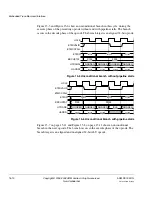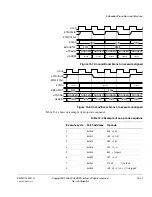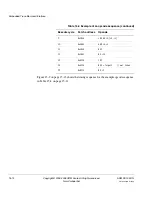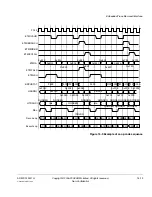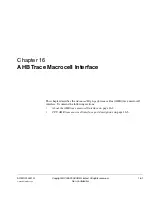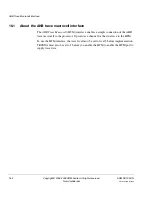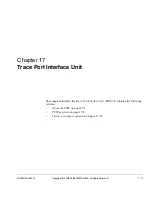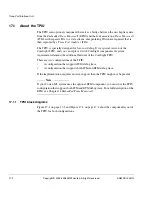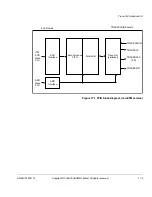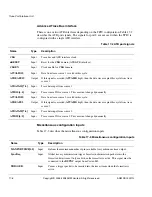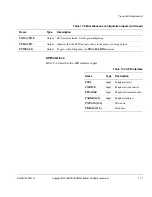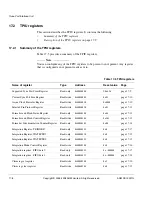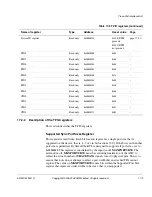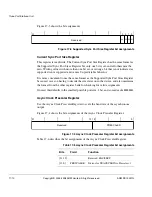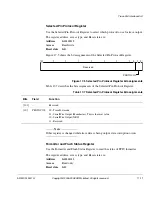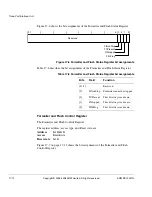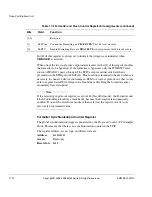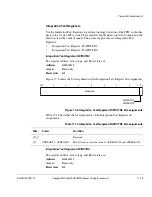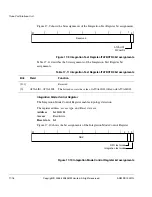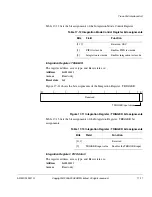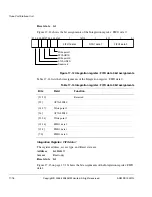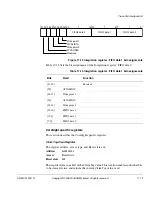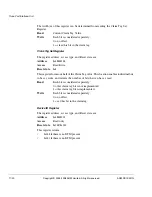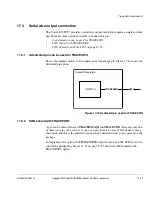
Trace Port Interface Unit
17-6
Copyright © 2005-2008 ARM Limited. All rights reserved.
ARM DDI 0337G
Advanced Trace Bus interface
There is one or two ATB interfaces depending on the TPIU configuration. Table 17-2
describes the ATB port signals. The signals for port 2 are not used when the TPIU is
configured with a single ATB interface.
Miscellaneous configuration inputs
Table 17-3 describes the miscellaneous configuration inputs.
Table 17-2 ATB port signals
Name
Type
Description
CLK
Input
Trace bus and APB interface clock.
nRESET
Input
Reset for the
CLK
domain (ATB/APB interface).
CLKEN
Input
Clock enable for
CLK
domain.
ATVALID1S
Input
Data from trace source 1 is valid in this cycle.
ATREADY1S
Output
If this signal is asserted (
ATVALID
high), then the data was accepted this cycle from trace
source 1.
ATDATA1S[7:0]
Input
Trace data input from source 1.
ATID1S[6:0]
Input
Trace source ID for source 1. This must not change dynamically.
ATVALID2S
Input
Data from trace source 2 is valid in this cycle.
ATREADY2
Output
If this signal is asserted (
ATVALID
high), then the data was accepted this cycle from trace
source 2.
ATDATA2S[7:0]
Input
Trace data input from source 2.
ATID2S[6:0]
Input
Trace source ID for source 2. This must not change dynamically.
Table 17-3 Miscellaneous configuration inputs
Name
Type
Description
MAXPORTSIZE[1:0]
Input
Defines the maximum number of pins available for synchronous trace output.
SyncReq
Input
Global trace synchronization trigger. Inserts synchronization packets into the
formatted data stream. Only used when the formatter is active. This signal must be
connected to the
DSYNC
output from Cortex-M3.
TRIGGER
Input
Causes a trigger packet to be inserted into the trace stream when the formatter is
active.

